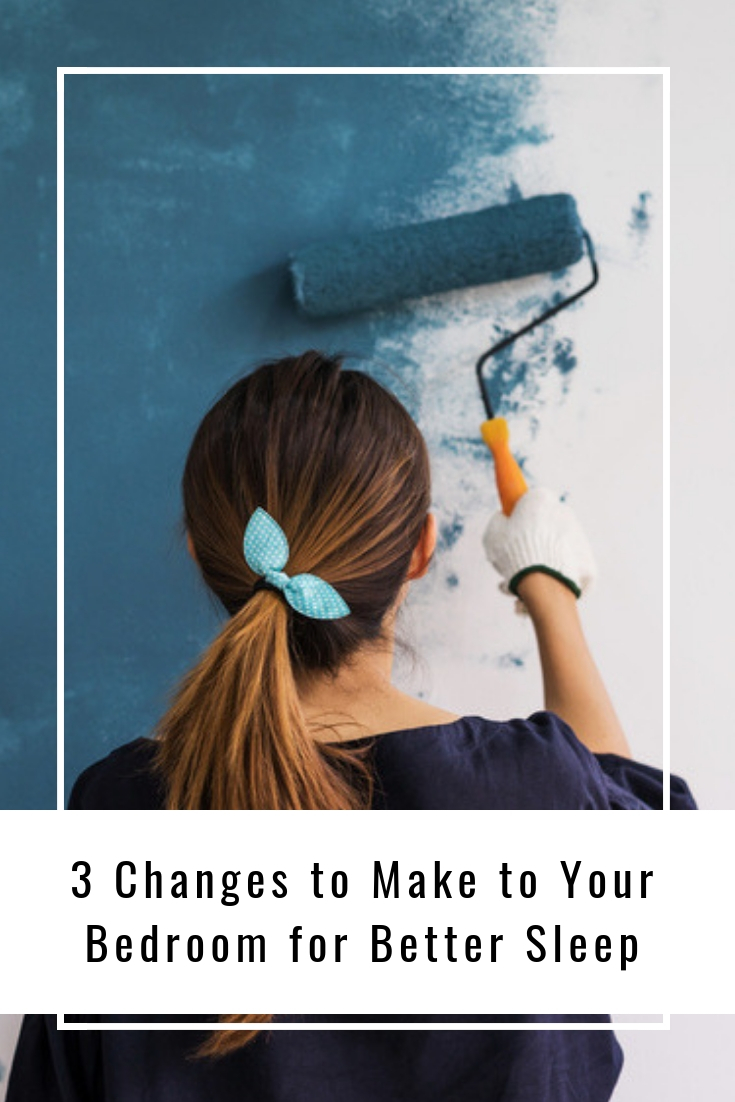3 Changes to Make to Your Bedroom for Better Sleep

Many homeowners make simple changes to their houses to increase aesthetics. Something small like painting a wood fence every two or three years can make a big difference in the appearance of a home. But homeowners also need to think about comfort and how their home design makes them feel. One room that deserves extra attention is the bedroom — getting a good night’s sleep starts with the design of a bedroom. So to help ensure you’re getting plenty of sleep, here are a few changes you can make to your bedroom.
Choose the Right Colors
In a 2017 interior design survey, more than one-third of respondents reported they would choose a neutral color palette when redecorating their home. With about two-thirds of homeowners planning on renovating, painting is a common task. And if you’re looking for better sleep, you should start by re-painting your room. Cool colors, like blue, gray, green, and lavender, can all create a relaxing environment. Neutral colors are good choices as well. Having a cool or neutral color on your wall can actually lower your blood pressure and help you sleep better. It’s important to avoid bright colors, especially ones like orange or red, because those colors can actually increase your stress levels. And always opt for a matte finish to help keep colors soft and less distracting.
Keep it Dark and Quiet
Noise and brightness are two factors that can immensely impact the quality of sleep you get. To reduce noise, consider adding rugs or carpet to add some sound-muffling elements. Additionally, choice materials like shag, wool, silk, and faux fur for bedding and rugs can also help limit noise traveling throughout the room. If possible, choose upholstered furniture and add wall hangings to further help with noise reduction. And consider adding a ceiling or standing fan to add some white noise and relaxation.
As for brightness, it’s important to turn off all of the lights — while having some light in a bedroom may bring comfort, even the slightest bit of light can disrupt sleep. If you are sleeping during the day or have street lights right outside your window, you may want to consider black-out curtains. The heavy, dark material turns your room into a calm, dark space to sleep in.
Get Rid of Electronics and Clutter
If you have a television, computer, or even your phone in your bedroom while you’re trying to sleep, your sleep is going to be poor. Electronics stimulate the brain and keep you awake — and with between 10 and 18% of U.S. adults suffering from chronic sleep issues, it’s important to keep electronics out of the bedroom. This is also true for additional clutter throughout your room. The more stuff you have in your room, the more you’re going to feel anxious and distracted. So try to keep the number of items you have in your room limited for the best chance at getting sound sleep.

Getting a good night’s sleep is essential for your physical and mental health. And making these few simple changes to your bedroom may be just what you need to get some truly wonderful rest.
Be sure you are subscribed so that you don’t miss a thing!
Let’s connect!